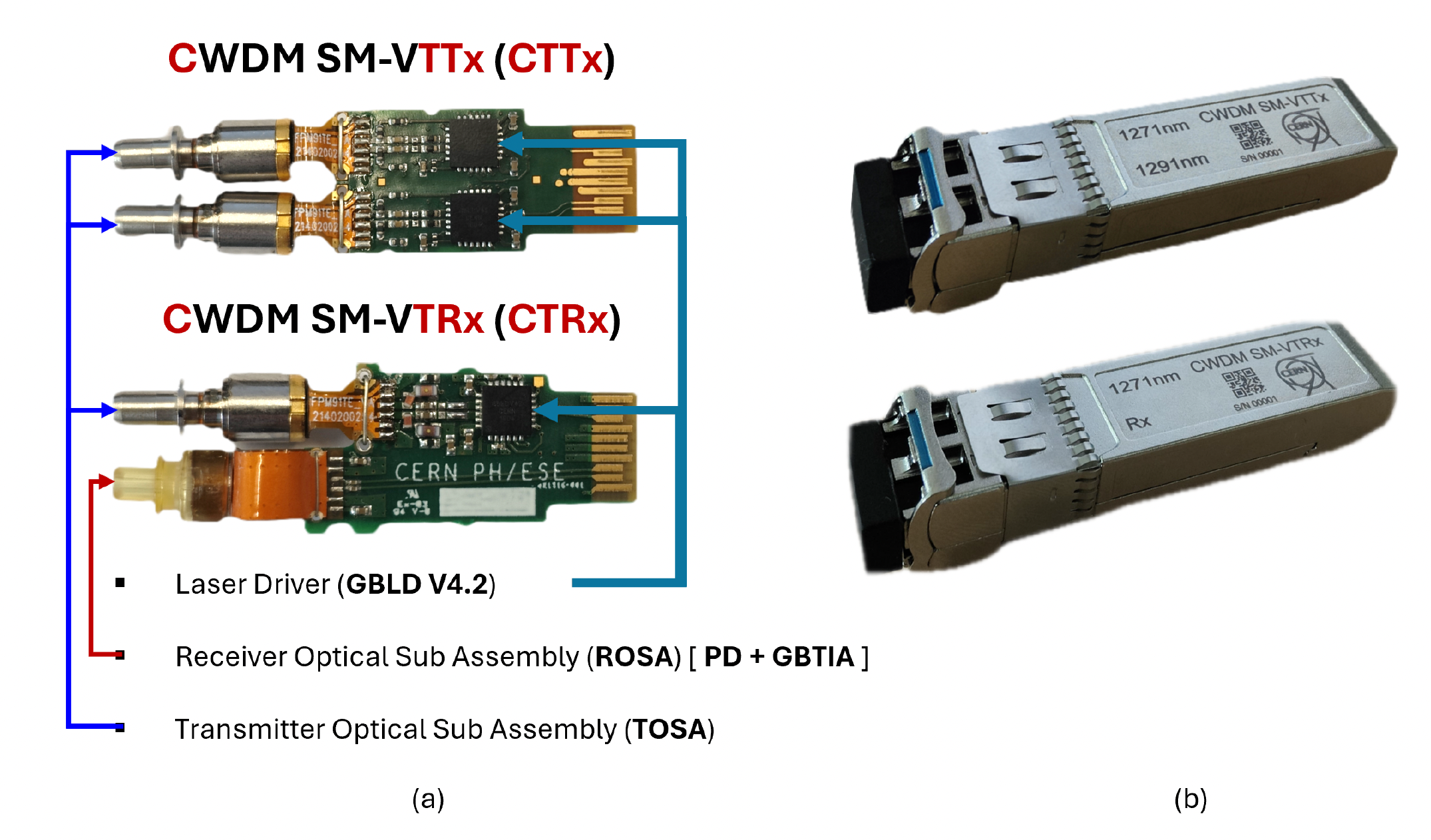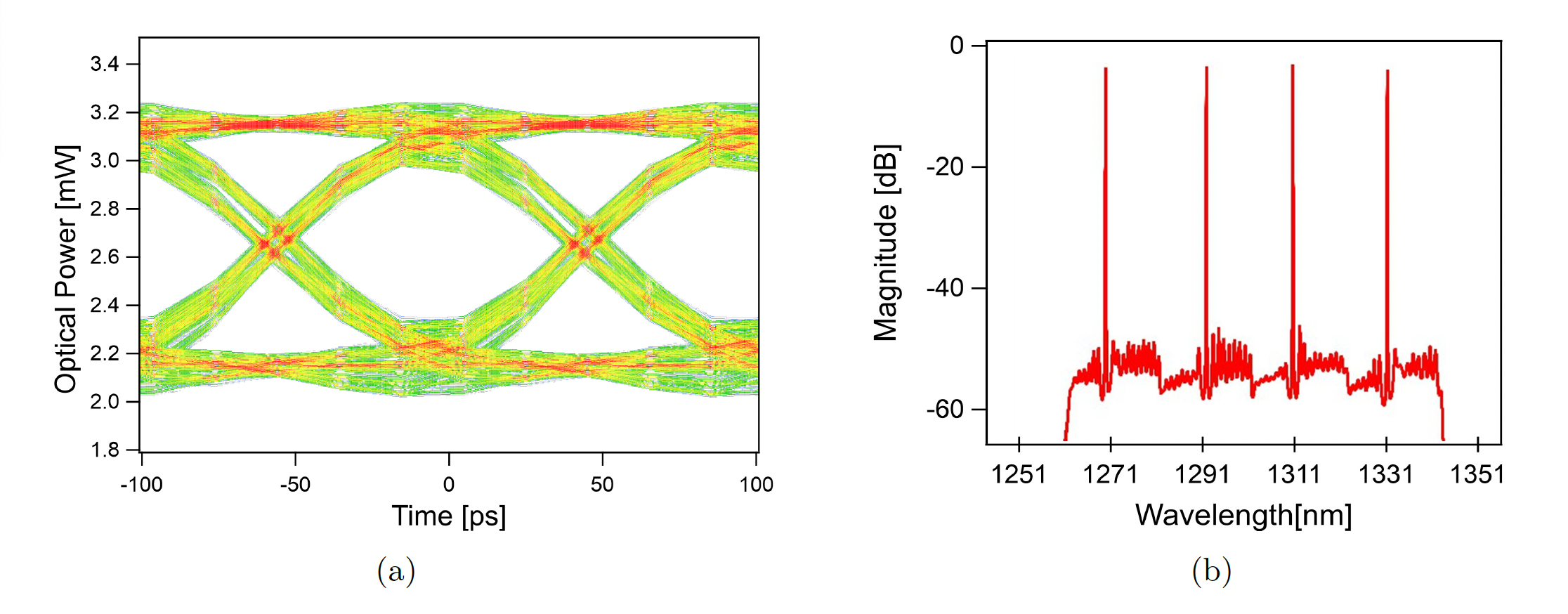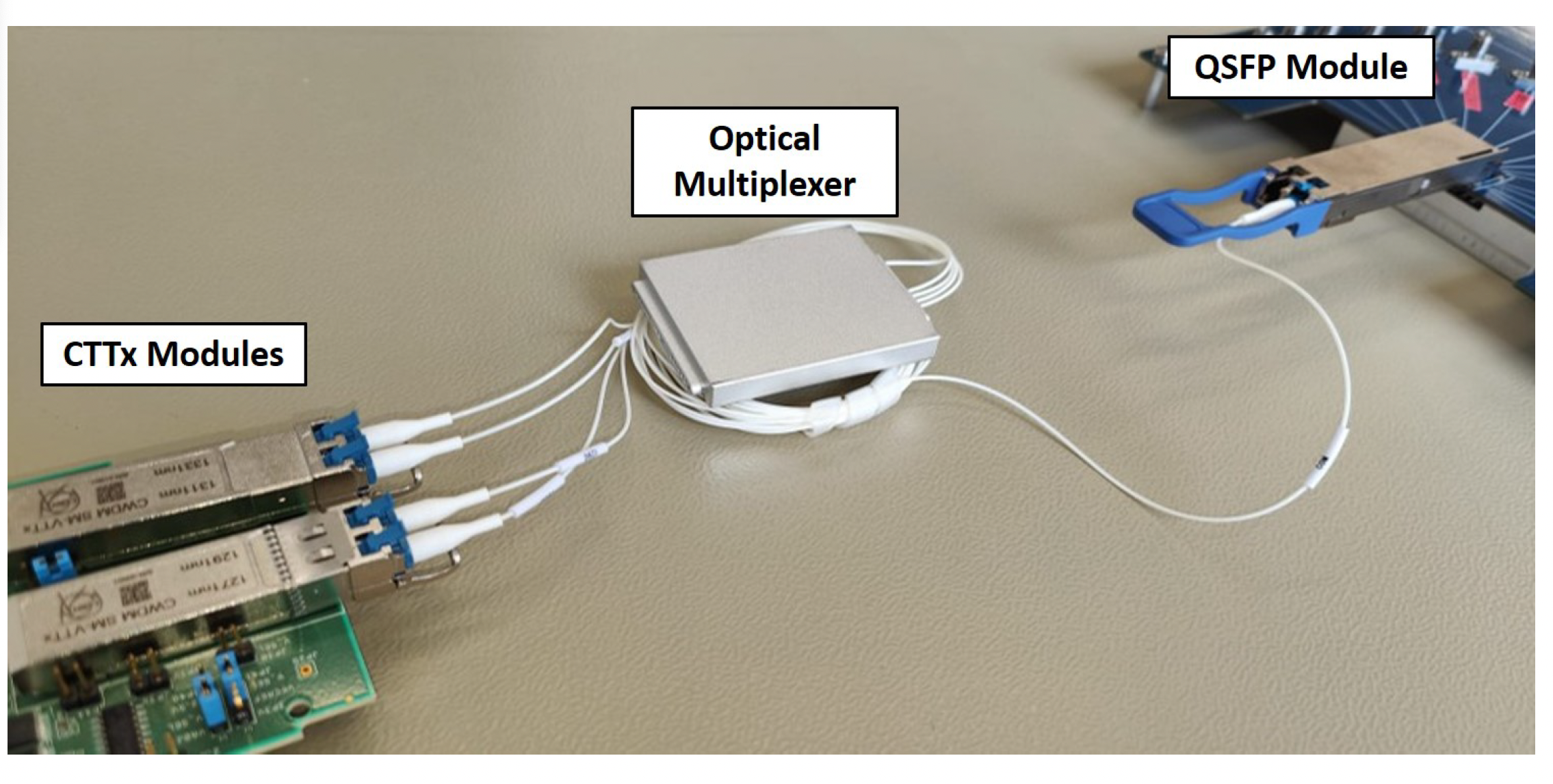CWDM Link: A High-Bandwidth Optical Upgrade for LHC Beam Instrumentation

The Versatile Link project[1] was initially developed to provide a point-to-point radiation-hardened optical link common to most CERN experiments which upgraded during Long Shutdown 2 (LS2). The Beam Instrumentation group (SY-BI) also adopted it as backbone of the SPS beam instrumentation (BI) front-end electronics upgrade[2], performed in the same timeframe. The reliability and performances of the Versatile Link proven throughout the years up until now led the colleagues of SY-BI to rely on the same technology also for the upgrade of the LHC BI front-end electronics [3, 4] planned for Long Shutdown 3 (LS3). However, the new front-end system imposes more challenging requirements to the optical link, including transmission over distances up to three kilometers of Single-Mode (SM) fibre and data throughput up to 40 Gb/s per fibre, far exceeding the 4.8 Gb/s supported by the Versatile Link project transceivers.
The EP-ESE-BE team tackled these challenges by launching the CWDM Link project, a rapid and high-performance solution developed within the relatively short time-frame leading up to LS3. The project leverages the Coarse Wavelength Division Multiplexing (CWDM) technique[5], which significantly increases the data-carrying capacity of a single fiber by multiplexing up to four independently modulated optical signals. Each of these signals is characterized by a unique wavelength and is managed using passive optical components. Figure 1 illustrates the general architecture of the CWDM Link.

Figure 1: General block diagram of the CWDM Link architecture
The project utilizes two custom-designed radiation-tolerant modules, shown in Figure 2, on the front-end: a dual transmitter module, named CWDM SM-VTTx (CTTx), and a transceiver module, named CWDM SM-VTRx (CTRx), both derived from the previous generation of VTTx/VTRx of the Versatile Link project.
The CTRx receiver side retains the VTRx’s Receiver Optical Sub-Assembly (ROSA), including an InGaAs PIN photodiode and a radiation tolerant Trans-Impedance Amplifier (GBTIA[6]) supporting incoming data rates up to 5 Gb/s. The transmitter side of both CTTx and CTRx integrates the custom rad-hard GBLD V4.2 laser driver[7] and a newly selected Transmitter Optical Sub Assembly (TOSA). The modules, packaged in a standard SFP+ form factor metal case, incorporate key adaptations on the transmitting channels for long-reach single-mode operation and CWDM compatibility.

Figure 2: (a) CTTx [top] and CTRx [bottom] modules without external packaging. (b) CTRx modules packaged in the metal SFP+ case.
Differently from the VTTx/VTRx modules, the CWDM link employs single-mode Distributed Feedback (DFB) lasers specifically chosen for their ability to produce optical beams at precise and stable wavelengths required for CWDM applications together with their capability to be modulated at data rates up to 10 Gb/s. Selecting the appropriate DFB TOSA involved an extensive process, including market surveys and rigorous testing campaigns. TOSA candidates underwent comprehensive functional, environmental, and radiation tolerance testing involving neutron and gamma irradiation tests[8, 9], to ensure the components could withstand the harsh conditions expected near the LHC beam pipe during the High-Luminosity LHC (HL-LHC) era, with radiation levels up to 5 × 1014 neutrons/cm² and a Total Ionizing Dose (TID) of less than 10 kGy over an anticipated 10-year lifetime[10], all while operating correctly in ambient temperatures ranging from 25°C to 60°C. The DFB TOSAs chosen for the application, integrated with the GBLD v4.2 laser driver, demonstrated reliable operation at 10 Gb/s, as shown in Figure 3(a). To align with commercial standards and ease the sourcing of the remaining optical components of the link, the central lasing wavelengths of the TOSAs chosen for the project are 1271, 1291, 1311 and 1331 nm, spaced according to the ITU G.694.2 standard[11].
Having two types of modules opens up to flexible link configurations. For instance, up to four independent 10 Gb/s transmitting channels can be multiplexed onto a single fibre by employing two dual transmitter (CTTx) modules and one optical multiplexer, as successfully evidenced by the optical spectrum shown in Figure 3(b), achieving a total fibre throughput of 40 Gb/s. However, mixed configurations are supported, such as setups with two transmitting and two receiving channels or even simpler 2×1 multiplexing schemes, easily adapting the optical link design to the specific needs of different users. At the back-end, located in the radiation-free areas, the link uses readily Commercially available Off-The-Shelf (COTS) transceivers, offering further design freedom by supporting standard interfaces such as SFP+, as well as more compact solutions like QSFP. Notably, QSFP modules integrate optical demultiplexers, thereby eliminating the need for a separate demultiplexer unit at the back-end and resulting in the simple optical link shown in Figure 4.

Figure 3: (a) Optical eye diagram at 10 Gb/s PRSB7 data pattern of a CTTx channel. (b) Optical spectrum of two CTTx multiplexed in a single fiber.

Figure 4: Proof-of-concept of the CWDM Link using two CTTx on one end, a 4-to-1 optical multiplexer and one QSFP module on the other end.
While the active front-end modules are critical, the optical multiplexers are equally important for the link’s overall performance and reliability. Although being commercially available components, they must correctly function within the LHC environment. Consequently, the project involved a careful selection process for the CWDM multiplexers, which ultimately culminated in the choice of Thin Film Filter (TFF) based optical multiplexers. TFF-based technology offers a compact solution and it is inherently resistant to displacement damage. Potential sensitivity to TID was verified through gamma irradiation testing, exhibiting excellent resilience and remaining well within specifications even at doses exceeding those expected in their operational locations. The successful qualification ensures the functionality of the full optical path, from the custom front-end modules to the commercial back-end receivers.
In conclusion, the CWDM Link project represents a significant upgrade in the domain of radiation hardened optical links and an excellent example of technology transfer from experiments to LHC instrumentation. It delivers a flexible, high-bandwidth, radiation-hard optical data transmission system, ready to meet the challenges of the HL-LHC era. By leveraging existing infrastructure, pushing performances of custom rad-hard ASICs and ensuring rigorous qualification of commercial components, this solution provides a rapid and cost-effective upgrade path, ensuring the essential beam monitoring to maximize the LHC’s performance.
Acknowledgment: The author thanks the colleagues of SY-BI for the support to the project!
References
- C. Soos et al, The Versatile Transceiver: towards production readiness, JINST (2013), 8, C03004
- M. Wendt et al., Upgrade of the CERN SPS Beam Position Measurement System, JACoW IPAC 2018, (2018) 2047.
- M. Saccani et al., The Beam Loss Monitoring System after LHC Injectors Upgrade at CERN, JACoW IBIC 2021, 10, (2021) 285.
- M. Wendt et al., Consolidation of LHC Beam Position Monitors, CERN EDMS Repository
- F. Levinson et al., Coarse Wavelength Division Multiplexing: Technologies and Applications, CRC Press (2018)
- M. Menouni et al, The GBTIA, a 5 Gbit/s radiation-hard optical receiver for the SLHC upgrades, Proceedings of the Topical Workshop on Electronics for Particle Physics, (2009) 326.
- G. Mazza et al, The GBLD: a radiation tolerant laser driver for high energy physics applications, JINST (2013), 8, C01033.
- L. Marcon et al, High speed radiation tolerant optical links based on coarse wavelength division multiplexing, JINST (2023), 18, C02055.
- A. Cristiano et al, CWDM-based radiation-tolerant high-speed optical links, IOP Science
- G. Lerner et al, Radiation level specifications for HL-LHC (LHC-N-ES-0001), CERN EDMS Repository
- ITU-T, Spectral grids for WDM applications: CWDM wavelength grid, https://www.itu.int/rec/T-REC-G.694.2/en
